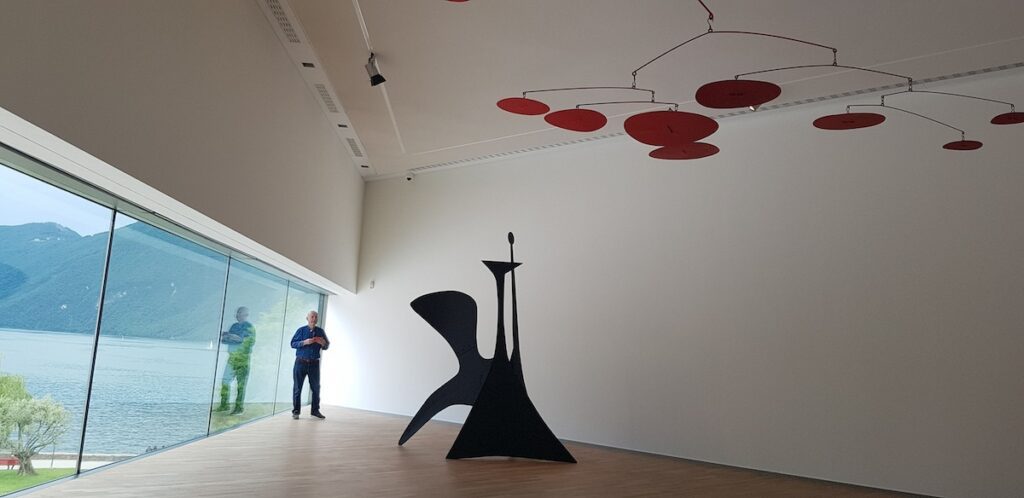Head South to Ticino
Epicureans say, “If you want good coffee in Switzerland go south, if you want good strüdel go north” South means Lugano – in the canton of Ticino – where Swiss quality meets Italian lifestyle.
Sweet Doing Nothing
The city of Lugano sits on the north shore of Lake Lugano shouldered by Monte San Salvatore and Monte Brè, its ancient car-free city centre a maze of shady alleyways, galleria, and piazzas with cool fountains, the perfect place to sit and watch the Luganese practice “dolce far niente” – sweet doing nothing – over an espresso.


Here, in Via Pissina, you’ll find Gabbani, a restaurant, bar, butchers, and bakers (not a candlestick maker though), since 1937. Duck under the salami and hams swaying from the ceiling and enter a sensual world of smells and tastes. Glimpses of the lake appear down passageways and it’s time to hop on a boat and explore from the water.
Pretty in Pastels
Lake Lugano is as far south as you can go in Switzerland – just 3km shore-to-shore from Italy. They share the Mediterranean climate, Lombardian attitude and architecture. The Swiss Travel Pass (more of which later) includes unlimited access to boat cruises. Our vessel is headed to Morcote, dubbed the ‘Prettiest Swiss Village’. That’s a big reputation to live up to. Pastel-coloured houses tumble down the steep hillside to the landing stage, once a fishing village. The only fishing now is for tourists’ francs.

The Santa Maria del Sasso bell tower looms above, only four hundred and four steps to salvation…or a coronary. The quayside is lined with ‘Portici’ – arches – made of reclaimed stone from Roman villas long gone, now home to a bevvy of souvenir sellers and cafés but it’s not quite elevenses yet, so back on the boat, the red flag of Switzerland fluttering from the stern *Did you know that the Swiss flag is the only square flag in the world…apart from the Vatican.*

Order on the Border
The cruise continues under the Melide Bridge, the main access route to Italy. 80,000 Italians commute over this daily, not for the love of their neighbours, but more for economic reasons: wages in Switzerland are considerably higher, and service workers are at a premium. This disparity means that smuggling was once a thriving industry. Goods imported into Italy – tobacco, coffee, alcohol and sugar – were dutiable, whereas across the lake they were not.

The Italian border guard built a costly metal fence to prevent the smugglers from entering the country illegally (inspiration for Trump, perhaps?). Smugglers came up with inventive ways to bypass guards. In 1886, the Guardia di Finanza uncovered a cheese wheel at Chiasso station whose hollowed-out interior was stuffed with three hundred kilos of tobacco products, and in November 1948 a pedal-powered submarine on the banks of Lake Lugano was discovered. It was three metres long and could transport up to four hundred and fifty kilos of goods.
Caffeine o’clock
Back on shore Lugano Food and Wine guide Patricia Carminati is waiting; good news, as I’m craving my caffeine hit of the day. Not for me the Italian near-religious ritual of the espresso. I transferred my passion many years ago to a single cup of cocoa – no sugar – each day at eleven. OCD? Definitely. Patricia leads me into the first stop on her tour, the Grande Café Al Porto, the place to be and be seen since 1803.

Waiters guide a path to the best table. It seems like everyone in the place knows her… “Ciao! Salve! Pronto!” My eyes scan the menu, and there it is. Cioccolata densa. Thick chocolate. I apply my test and stand the spoon up in the middle. It stays, embedded in the rich, glutinous little cup of heaven.
White or Red?
Still buzzing, on to our next stop, La Corte Vineria, for lunch and a wine tasting. Direttori Tony Landi, looking like a young Pavarotti, uncorked some wine as we decided what to eat. A white in one glass, red in the other. “Try the white first and see what you think” he said. It was delicate, floral, light. Superb. I’m a big fan of grapes like Riesling, Viognier, Gewürztraminer, so it rang the right bells.

I asked Tony what it was. “White Merlot. Ticino’s best kept secret” he laughed back. Merlot, to me meant rich, dark, Burgundian. Patricia explained that the grapes are crushed and filtered after a only few hours to prevent the grape skins from turning the wine a dark purple color before everything starts to ferment. The red, also a Merlot aged in French oak, Castello di Cantoni, was also superb. You live and learn.
Making the Little Shoe
The weather was ‘dimpsy’ as we say in Devon, adding a touch of mystery to the view from the Villa Principe Leopoldo 5*, high above the lake, reminiscent of Hong Kong during monsoon season. Built by a Prussian Prince in 1926 it is where Lugano’s smart set wine, dine, and stay. The food was as grand as the surroundings. My starter was a showstopper, Crispy raw tuna with saffron and squid ink broth, paired with, you guessed it, Bianco di Merlot Grand Cru A.O.C..

Here I got the low-down on Italian etiquette. I always use bread to mop up the sauce left on my plate. But, here, in the poshest of the posh, was it acceptable? I asked Patricia. “Here, a little bit frowned on, but anywhere else acceptable. By the way” she added, “we call it ‘scarpetta’ – literally little shoe”. Sweetie indulgences rounded the occasion, ‘Or Noir’ chocolate and red fruits composition. The evening exemplified the description of Ticino as ‘Swiss quality meets Italian lifestyle.’
Ticket to Ride
“Nobody has a car if they live in the city” Michel Cavadini, Head of Foreign Markets for Ticino, told me the next day. “Our transport system is so good you can take the bus, train, and boat for business and pleasure. Visitors who stay overnight get a ‘Ticino Ticket’ allowing all public transport free including special rates for various activities. Before you go you must see the special exhibition at the Museo d’Arte Svizzera Italiana.” (MASI, for short).

Open until 6 October the show brings together thirty works of Alexander Calder, father of the mobile, tracing the way he incorporated movement and time into his work. The museum, a stunning building in its own right, is the perfect showplace for his artworks. As you wander past the mobiles they shimmer and shake in response.
Trains and Boats and Planes
The only sensible way to travel distances in Switzerland is by train, and the-best-of-the-best is the Gotthard Panorama Express to Zurich and my SWISS flight home. Partway by first class train, partway by lake cruise, nothing could be more delightful. Carriages have huge, curved windows allowing spectacular views (“best on the right side” the customer manager tells me).

My Swiss Travel Pass covers the entire journey. The track curves around the hilltop town of Wassen three times winding itself up or down the terrain. On arrival at Flüelen, a short transfer to lake cruiser takes you to Lucerne, thence train to Zurich. All as smooth as silk.
If you would like more information on Ticino, see online. If you would like more information on travel to and around Switzerland, you can see online or at the Gotthard Panorama Express website.


